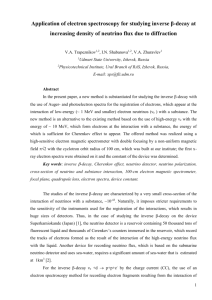Lecture.11.Standard.Model.Electro
advertisement
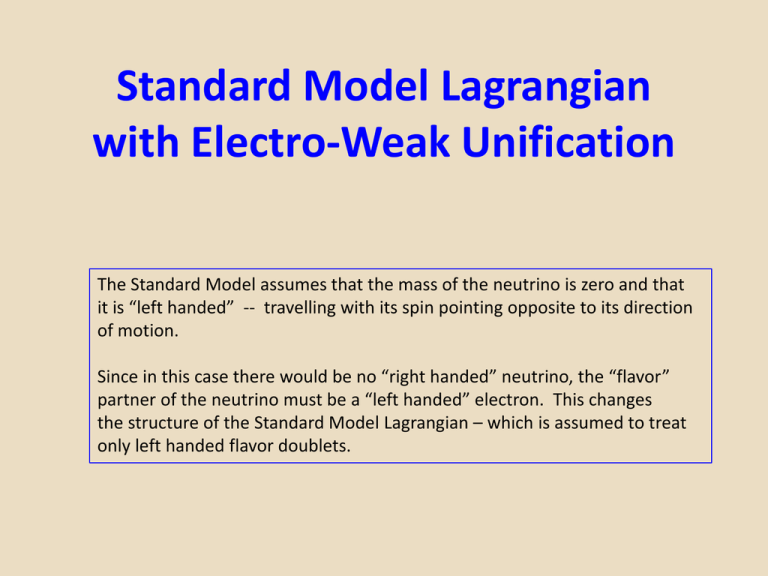
Standard Model Lagrangian with Electro-Weak Unification The Standard Model assumes that the mass of the neutrino is zero and that it is “left handed” -- travelling with its spin pointing opposite to its direction of motion. Since in this case there would be no “right handed” neutrino, the “flavor” partner of the neutrino must be a “left handed” electron. This changes the structure of the Standard Model Lagrangian – which is assumed to treat only left handed flavor doublets. The spinor for the neutrino is the same as for the electron, if one substitutes m = 0 : neutrino spinor The helicity operator, p, satisfies the following condition 2 So when acting on the spinor It’s a projection! =u 1 u From this we can determine conditions on a and b left hand side gives 1 (p) (p)/pp = 1 (2x2 unit matrix) So, we have the following condition on a and b: These are the only spinors allowed for a zero mass neutrino! positive helicity negative helicity The neutrino, if it has a zero mass can only have its spin pointing along (or opposite to) it’s momentum. Non-conservation of parity: Wu 1957 J number of electrons e Helicity of the neutrino: Goldhaber 1958 The neutrino could have both values of helicity, and Wu’s experiment, while confirming non conservation of parity (left-right symmetry broken), did not conclusively determine the neutrino’s helicity. In 1958 Goldhaber determined the helicity of the neutrino in the K capture of an electron: 63Eu152 (J=0) 62Sm*152 (J=1) + . The Sm* decays giving off a photon with the same helicity as the neutrino. Goldhaber measured the helicity of the photon by passing it through magnetized iron. If the photon has the same direction of spin as the magnetized iron, it would pass through, otherwise it would produce a spin flip. He reported a helicity of -1. Since 1998 it has been accepted that the neutrino has a small mass. This produces some corrections in the Standard Model. For this description of the Standard Model, it is assumed that the neutrino has no mass. Each term in the SM Lagrangian density containing quarks and the leptons can be rewritten using the following expression. For the neutrinos, however, only the left handed term exists. In the following slide we use the notation d R = dR The following is the interaction Lagrangian density for the first generation of particles with the left and right handed parts shown explicitly. B B B B B W1 W1 W2+ W2+ B W3 W3 sum over a = 1,2,…8 aGa aGa Weinberg’s decomposition of the B and W: W = Weinberg angle -- to be determined experimentally! sin2W 0.23 Next steps: rewriting interaction Lagrangian density so that interactions with the photon are identified. 1. 2. 3. The neutrino has zero charge and can’t interact with the photon. After substituting the expressions for B and W0 (which takes some work), one can identify factors which equal e, the electronic charge, or the up quark charge, etc. This permits one to find relationships between sinW , cos W , e, g2 and g1. One finds that: g 2 = e / sinW g 1 = e / cosW Also one defines: T 3f YL = -1 YR = 2 YL = + 1/2 for the uL = - 1/2 for the dL = 0 for uR = 0 for dR The Standard Model Interaction Lagrangian for the 1st generation (E & M) QED interactions weak neutral current interactions + weak flavor changing interactions + QCD color interactions The U(1) and SU(2) interaction terms g2 = e / sinW e A (E & M) QED interactions g2 Z+ Z weak neutral current interactions g2 W+ weak flavor changing interactions W-
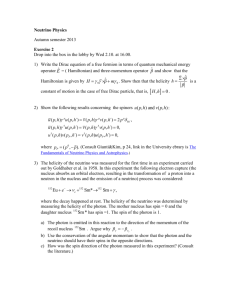
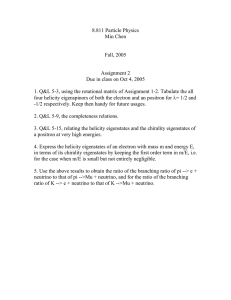

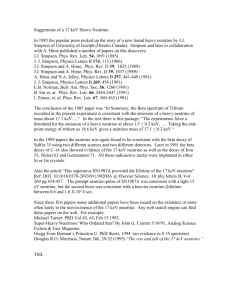
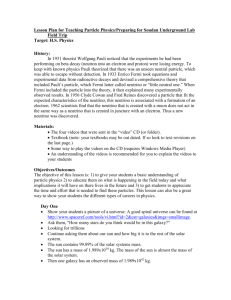
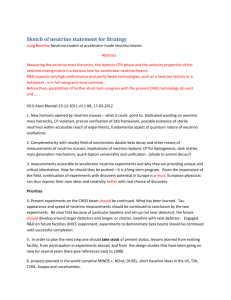
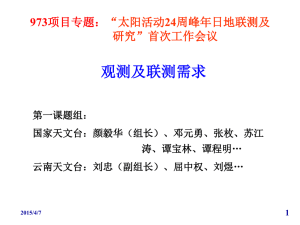
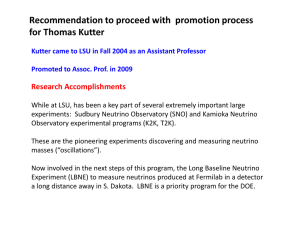
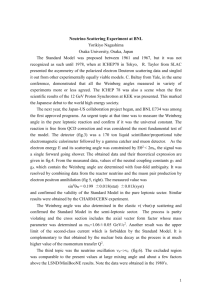
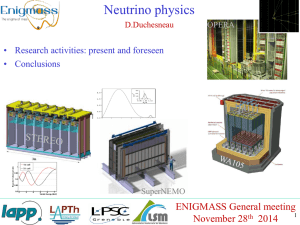
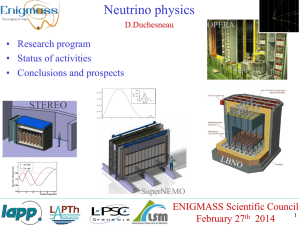
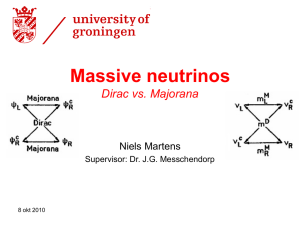
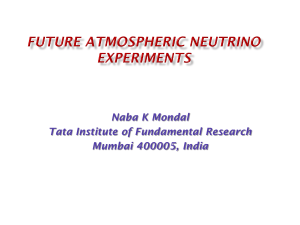
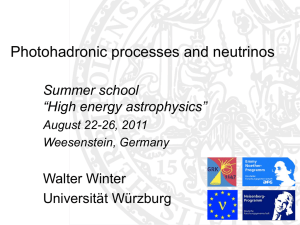
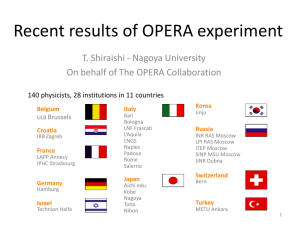
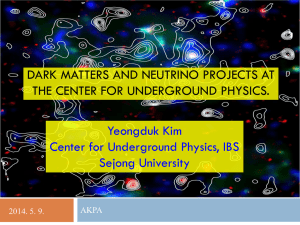
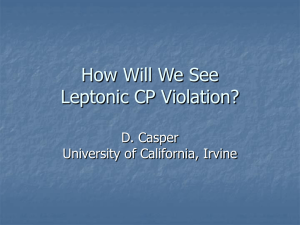
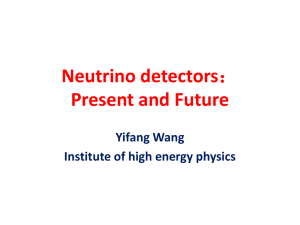
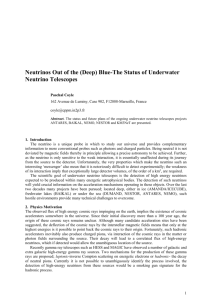
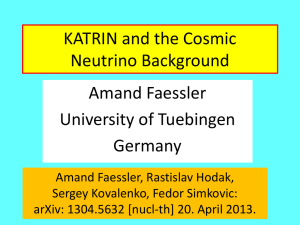
![slides [ppt] - Latsis Symposium 2013](http://s2.studylib.net/store/data/005775657_1-59a6bcb8e3e83e4e7dc3b73bb4fc9b7e-300x300.png)
